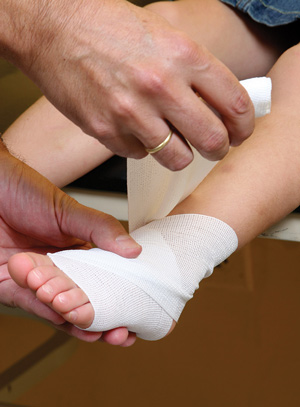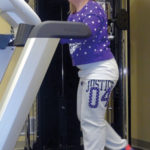 Experts push for better sprain rehab
Experts push for better sprain rehab
By P.K. Daniel
Primary ankle sprains often occur before adulthood, and a recent literature review from Australia suggests that some pediatric populations exhibit a high rate of ankle injury recurrence and chronic ankle instability (CAI). This finding, which echoes what has long been observed in adults, has raised concerns that ankle sprains in children are not being managed properly.
A systematic review of chronic ankle instability in children by University of Sydney researchers found that as many as 71% of children with a history of ankle sprain had perceived instability and as many as 47% had mechanical instability.
“We still don’t know exactly what percentage of children will go on to develop CAI, as no prospective study has been done. However, it is an outcome that is under-recognized,” said study coauthor Claire Hiller, PhD, a postdoctoral fellow in the university’s Arthritis and Musculoskeletal Research Group.
More than half (53.5%) of all ankle sprains occur in individuals aged between 10 and 24 years, according to a 2010 study. That study also found that teenagers and young adults have the highest rates of ankle sprain, with a peak incidence of 7.2 per 1000 person-years for those aged 15 to 19 years.
“As currently the only known predictor of a sprain is a previous sprain, having an ankle sprain early in life gives you a much greater opportunity to have another one and develop long-term problems,” Hiller said.
And yet, adults have been the focus of chronic ankle instability research.
The Australian review, which was published in March by the Journal of Foot and Ankle Research, analyzed nine studies on CAI focused on children and included ages up to 18 years. Many of the studies looked at specific youth populations, ie, dancers, soccer players, and those who had experienced “severe ankle trauma.” The review found that the prevalence of CAI was equal to or higher than that of adult populations. However, the overall shortage of studies on CAI in children led the review article authors to determine that more research was required.
Prevalence of perceived instability ranged from 31% in children with severe ankle injuries to 71% of children who were dancers. Nearly half (47%) of the dancers had mechanical instability.
“If our younger populations are exhibiting such high rates of ankle injury recurrence, it raises concerns that ankle sprains in this age group are not being managed properly,” said Phillip Gribble, PhD, ATC, associate professor in the Division of Athletic Training at the University of Kentucky in Lexington. “This is likely [because of a] lack of recognition for the need for proper immediate care and evaluation, as well as a lack of thorough rehabilitation before returning back to activity.”
Tricia Turner, PhD, ATC, an associate professor in the Department of Kinesiology at the University of North Carolina at Charlotte, said part of the problem is that children are being seen by practitioners who may not be aware that chronic ankle instability is a potential issue in children.
“Ankle sprains in children need to be treated and taken more seriously,” Turner said.
Balance training exercises, taping, and prophylactic bracing can minimize the risk of future instability, but access to healthcare professionals who can effectively implement these practices is limited in the adolescent population.
“And typically nonexistent for the prepubescent populations participating in sports,” Gribble said. “The treatment decision then rests with the parents. They are likely not to seek formal management and rehabilitation for their child’s ankle sprain, leaving the injured ankle at a higher level of susceptibility for reinjury.”
Fereshteh Pourkazemi, PhD, a physiotherapy lecturer in the School of Science and Health at the University of Western Sydney and coauthor of the Australian review article, said less developed patterns of motor and postural control, combined with higher levels of activity, may increase the risk of ankle sprains and development of chronic ankle instability in children.
“We should really be cautious, go slow, and be very, very conservative with the treatment,” said Thomas W. Kaminski, PhD, ATC, director of athletic training education and professor in the Department of Kinesiology and Applied Physiology at the University of Delaware in Newark.
Patrick McKeon, PhD, ATC, an ankle researcher with Ithaca College’s School of Health Sciences and Human Performance in Ithaca, NY, echoed that approach, also indicating that the return-to-play timeline probably needs to be longer for children than adults.
“Joint deficit influences coordination, and their coordination is in the development stage, as opposed to the refinement stage,” McKeon said. “We need to allow them more time to heal.”
Sources:
Mandarakas M, Pourkazemi F, Sman A, et al. Systematic review of chronic ankle instability in children. J Foot Ankle Res 2014;7(1):21.
Waterman BR, Owens BD, Davey S, et al. The epidemiology of ankle sprains in the United States. J Bone Joint Surg Am 2010;92(13):2279-2284.





